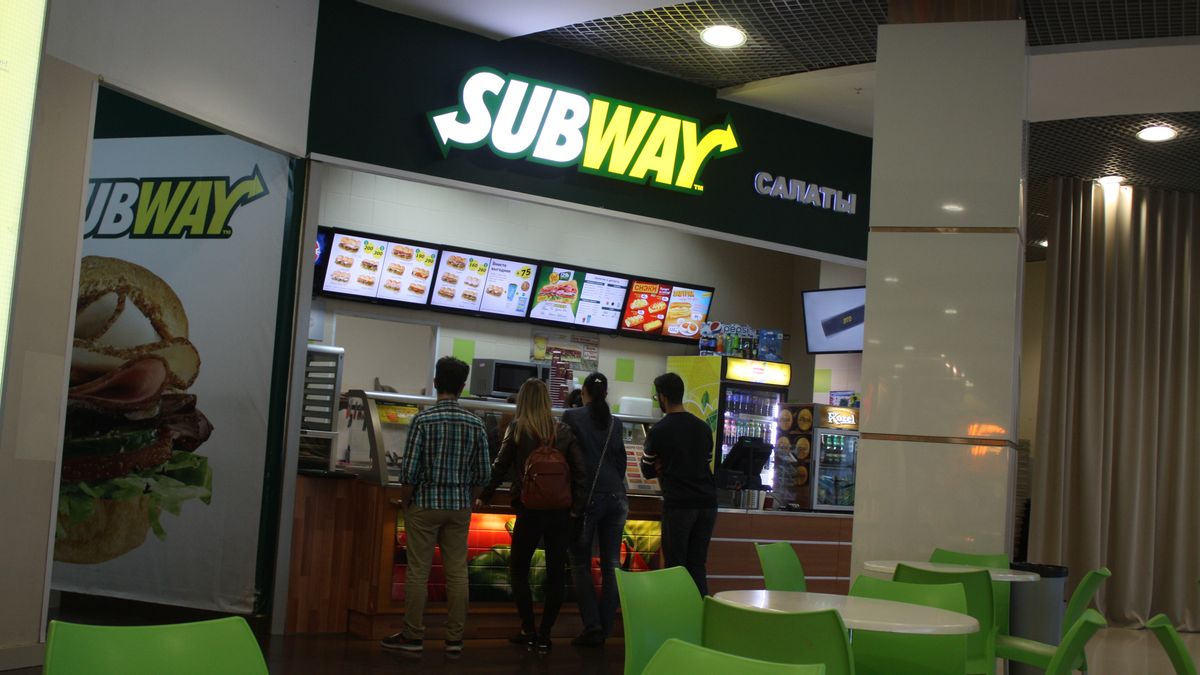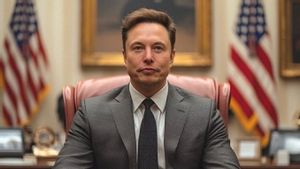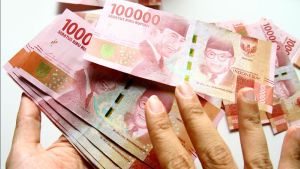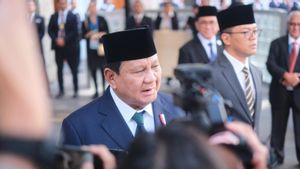JAKARTA - Fast food restaurant Subway once dominated major shopping centers in Jakarta and Bali in the 1990s. Subway wants to follow in the footsteps of its outlets' success in other countries. However, Subway's existence is only a lifetime. They misread the strategy. At that time there were not many middle class people in Indonesia, especially Jakarta. Not to mention the 1997-1998 recession storm which was bad news for the smooth running of the Subway business in the country.
No one thought the idea of a fast-food sandwich restaurant came from a nuclear physicist, Dr. Peter Buck. He shared his idea with a relative of Fred DeLuca's family. Without thinking, the 17-year-old accepted Buck's offer. In his mind, a restaurant business with a capital of a thousand dollars could be his main income.
The money is planned to be used in addition to paying for DeLuca's tuition. Buck did not forget to strengthen DeLuca with the magic sentence, "Let's open a submarine sandwich shop."
Finally Buck and DeLuca sandwich restaurant opened its first in August 1965 in Bridgeport, Connecticut, United States (US). The restaurant was named Pete's Super Submarines. Symptoms of success have been seen since the first day it opened. The sandwich, which is the mainstay of the restaurant, sold 312 pieces.
All because the price of the sandwich is affordable. One serving of sandwiches Buck and DeLuca sells for less than $1. Launching Britannica, the success of the sandwich restaurant prompted Pete's Super Submarines to add one more shop in 1966.
Two years later, the name of the restaurant began to change its name to Subway. The name change is in line with the emergence of a new logo that is identical to the bright yellow color. In fact, changing the name of the restaurant brings hockey to Buck and DeLuca. Unmitigated, Subway then emerged as a franchise restaurant with the presence of 16 Subway outlets in 1974.

Since then the name Subway began to be widely known in the US. The next step that DeLuca took was to formulate a business plan by breaking down the smallest to the most vital. He then sought the support of many parties to become his franchise owner. Also Subway outlets are starting to be present in many places from shopping centers to petrol stations.
He also began to promote his business so that his target market is wider. Advertising in various mass media, local and national is the main focus. After all, he himself sometimes goes directly to training new owners and staff of Subway garages. All Subway principles that prioritize service with the best quality are maintained.
Buck and DeLuca's efforts began to pay off in 1982. Subway achieved a previously unthinkable target, which was to have 200 fast food restaurant outlets. This success was followed by another success. Subway first recorded its first franchise abroad, or to be precise in Bahrain in 1984.
This condition had overwhelmed the owner of Subway. Problem after issue such as the distribution of royalties arose. A series of problems were then slowly overcome. Because of this, Subway has emerged as one of the most valuable franchises in the world.
“However, DeLuca's common sense made him change his tone about royalty. A new, more sophisticated system is now in operation, one that measures population and traffic patterns of people. For example, to ensure that there is no mutual prey between outlets.”
“Franchise holders who set up outlets near other Subway stores that are about to open can raise objections. DeLuca now has committees to deal with various issues, although franchisees have to pay a certain fee if they want the problem to be addressed,” say Emily Ross and Angus Holland in the book 100 Great Business Ideas (2007).
Failure in IndonesiaExpansion to Bahrain in fact opens another opportunity for Subway to spread its wings to all corners of the world. His shops began to appear in all corners of the world. Some of them are Hong Kong, Italy, to Pakistan. Indonesia does not want to lose. Subway outlets began to grow in the shopping center of the capital city of Jakarta in the 1990s.
DeLuca's fast food restaurant outlets appear at Pondok Indah Mall (PIM), Taman Anggrek Mall, Plaza Senayan, Ciputra Jakarta Mall, Wisma 46, and Supermal Karawaci. In fact, Subway outlets were present in Kuta, Bali. The presence of Subway also enlivened the competition for US franchises, which at that time had entered Indonesia first, such as Burger King, Mc Donald, and Kentucky Fried Chicken (KFC).
At first, Subway was able to get the attention of Jakarta residents. Subway's sandwiches are the main choice when Jakartans are bored with everyday food. However, before achieving glory, Subway rocked halfway.
Subway's strategy error in reading the market was the cause. One of Subway's vital mistakes is the owner's attempt to force Subway into Indonesia at an inopportune time. Subway alias entered when Indonesia's middle class had not yet been formed. Especially in big cities.

"In the past, Burger King, Yoshinoya, Subway were present and then they were not successful. That was in 1991, yes, the timing was not right. The middle class was only formed in the mid-2000s," said retail observer Yongky Susilo, quoted by CNBC.
The disparity between the low-income people and the rich to the very rich is very real. Therefore, those who access food on Subway are only the rich and the very rich. Which, in the national map the number is still too small.
This condition was explained by the Bengawan Ekonomi Soemitro Djojohadikusumo. The father of Prabowo Subianto once argued that the distribution of state income was uneven during the New Order era. Especially into the 1990s.
“I have a troubling impression that the distribution of productive in this country is even more unequal than the distribution of income. The concentration of productive wealth leads to an even more unequal concentration of income. The problem of poverty is closely related to the availability of land or at least to the availability of capital to improve the quality of the land,” explained Soemitro as written by Anne Booth and Peter McCawley in the book Economics of the New Order (1986).
Another problem that forced Subway to go out of business was the presence of the 1997-1998 recession. The state of the Indonesian economy which was in disarray due to the recession had an impact on all sectors, including Subway. Unemployment increases. Other companies are in danger of going out of business. It may be that some Subway outlets have survived until 2000. However, the impact of the recession forced them to leave Indonesia.
“Looking back for a moment in 1998-1999 there was an economic crisis and unemployment throughout Indonesia. The Indonesian economy was in free fall and reached a low point in 1998, when there was a very severe economic recession. Inflation reached 75 percent in 1998-1999, the highest in Indonesia's history," concluded Rosramadhana in the book Strategy and Socio-Political Problems of Indonesian Regional Autonomy (2018).
*Read other information about WORLD HISTORY or read other interesting articles from Detha Arya Tifada.
Other MEMORIESThe English, Chinese, Japanese, Arabic, and French versions are automatically generated by the AI. So there may still be inaccuracies in translating, please always see Indonesian as our main language. (system supported by DigitalSiber.id)













